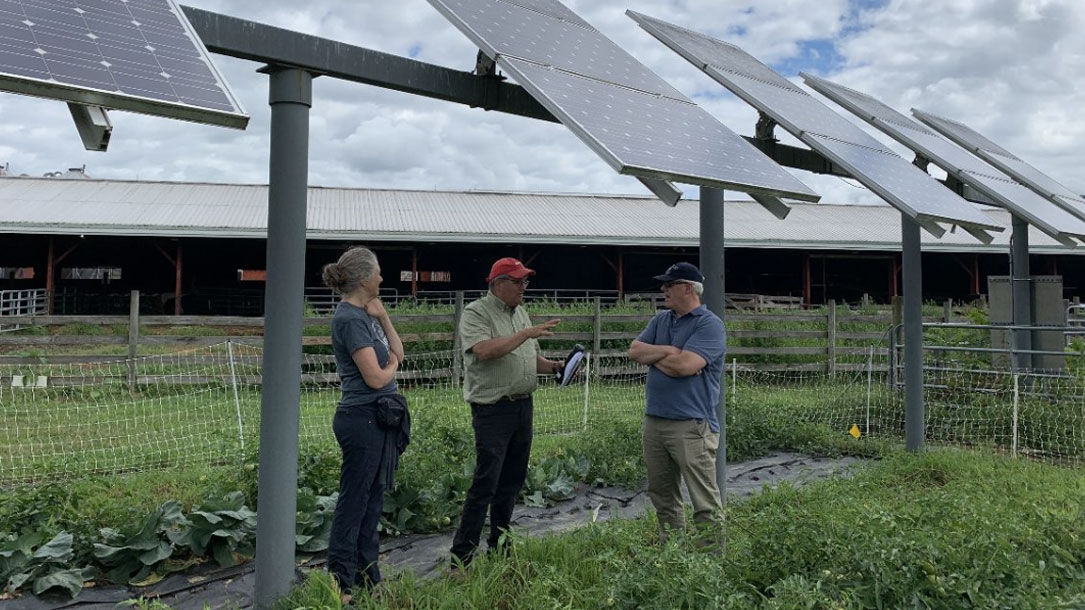Home > Climate News >

Climate change, antibiotics may threaten soil
A study by researchers at the Cary Institute of Ecosystem Studies in Millbrook, New York, has shown that when rising temperatures combine with antibiotic residues expelled by livestock, it degrades soil microbe efficiency, soil resilience to future stress, and its ability to trap carbon…

Breaking down the Inflation Reduction Act program by program, incentive by incentive
The Inflation Reduction Act is the biggest investment in clean energy and climate solutions in American history, so it can be hard to keep track of everything in it. This spreadsheet breaks down the funding opportunities in the bill in a way that allows a variety of users to easily find out which IRA programs and tax incentives can benefit them.
In particular, this spreadsheet was developed for use by:
- State and local/municipal governments
- Tribal Nations
- Businesses
- Non-profits
- Institutions of higher education
- Individual consumers

Research: Declining urban and community tree cover in the United States
Urban forests provide many benefits to society, including moderating climate, reducing building energy use and atmospheric carbon dioxide (CO2), improving air and water quality, mitigating rainfall runoff and flooding, enhancing human health and social well-being and lowering noise impacts (Nowak and Dwyer, 2007)…

New 50-year study offers insight into effects of climate on bird reproduction
Beyond effects of a warming climate on individual species’ reproductive output, the study also considered whether climate change may affect offspring production by interacting with other attributes of the birds…
Warming temperatures also were associated with less offspring production among relatively large birds. These changes were not necessarily caused directly by climate change but by the effects of climate change on the life histories and ecological traits of species that influence clutch size and rates of nesting failure over time…

Research report: Antibiotics and temperature interact to disrupt soil communities and nutrient cycling
Soils contain immense diversity and support terrestrial ecosystem functions, but they face both anthropogenic and environmental stressors. While many studies have examined the influence of individual stressors on soils, how these perturbations will interact to shape soil communities and their ability to cycle nutrients is far less resolved. Here, we hypothesized that when soils experience multiple stressors their ability to maintain connected and stable communities is disrupted, leading to shifts in C and N pools.

Explore climate change in the American mind
Are you curious about how the American public has been feeling about climate change over time? Perhaps you’re wondering how you might engage people around the topic of climate change?
These graphs provide some clarity on how peoples’ education levels, age, and political affiliations shape their opinions around climate change.

New tools and strategies for educators: grades 6-12
[Yale Climate Communications has] developed materials for teachers who are interested in using [the] resources in their classrooms, such as the Yale Climate Opinion Maps and Yale Climate Connections. These materials were developed based on recommendations from educators across the United States. They aim to immerse students in climate change issues in an accessible, digestible, and interactive way…

Migratory birds can partially offset climate change
“Understanding how animals can compensate is an important part of understanding where the impacts of climate change will play out,” said Marra. “In this case, we may not lose a species entirely, but it is possible that populations of some species may go extinct locally due to climate change…
“The good news is that birds are able to respond to changes in their environment,” Dossman said. “They have some flexibility and variation in their behaviors to begin with, but the question is, have they reached the limit of their ability to respond to climate change?”…

Made in the shade: Growing crops at solar farms yields efficiency
“There is potential for agrivoltaic systems – where agriculture and solar panels coexist – to provide increased passive cooling through taller panel heights [emphasis added], more reflective ground cover and higher evapotranspiration rates compared to traditional solar farms,” said senior author Max Zhang, professor in the Sibley School of Mechanical and Aerospace Engineering [at Cornell], “We can generate renewable electricity and conserve farmland through agrivoltaic systems.”
In New York, for example, about 40% of utility-scale solar farm capacity has been developed on agricultural lands, while about 84% of land deemed suitable for utility-scale solar development is agricultural, according to a previous research study from Zhang’s group…

USDA Forest Service Chief Randy Moore’s statement announcing actions the Forest Service will take to resume its prescribed fire program safely and effectively after completion of its 90-day national review
Washington D.C.,September 8, 2022 — USDA Forest Service Chief Randy Moore released the following statement announcing actions the Forest Service will take to resume its prescribed fire program safely and effectively after completion of its 90-day national review…












